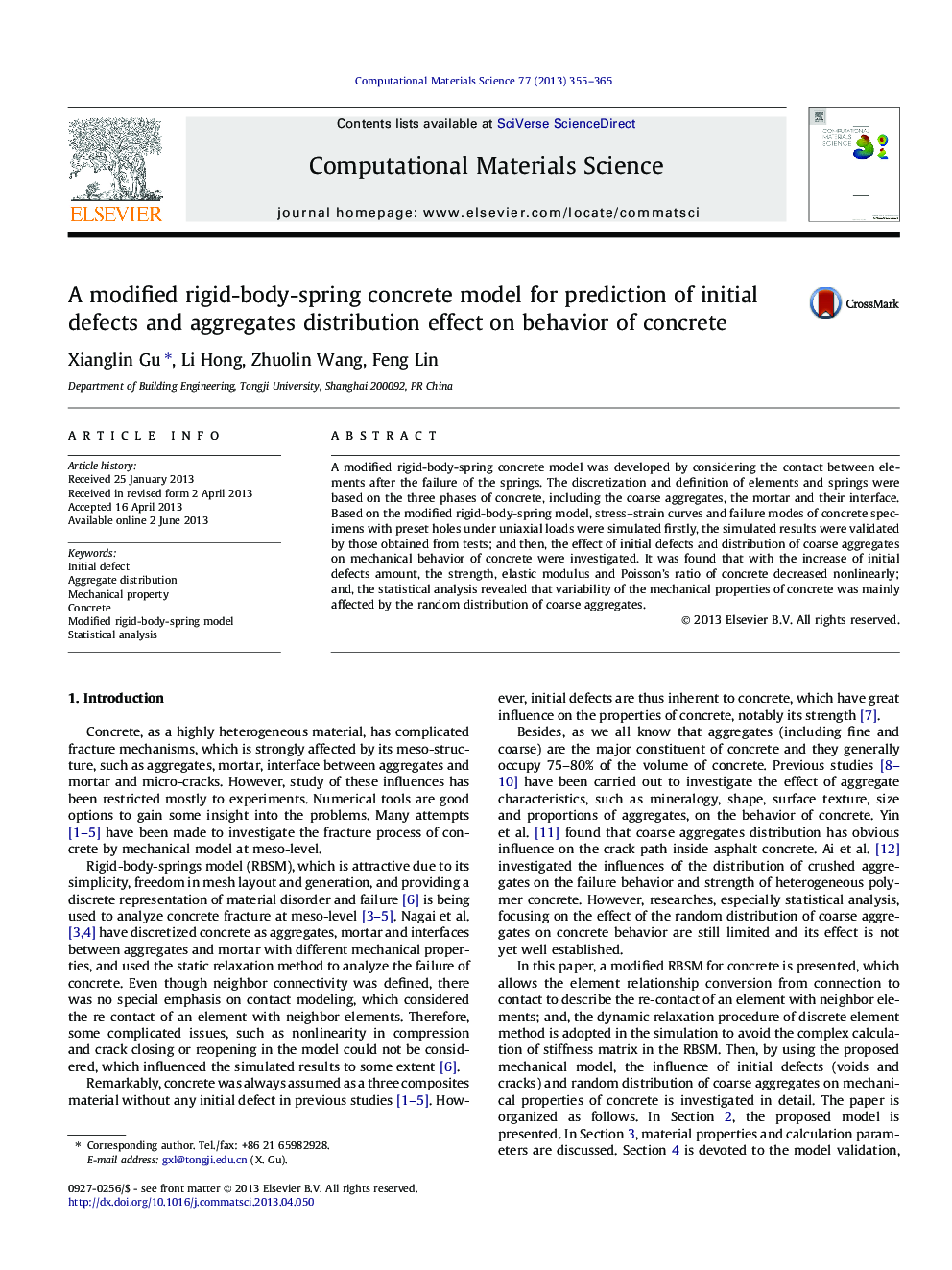| Article ID | Journal | Published Year | Pages | File Type |
|---|---|---|---|---|
| 7961818 | Computational Materials Science | 2013 | 11 Pages |
Abstract
A modified rigid-body-spring concrete model was developed by considering the contact between elements after the failure of the springs. The discretization and definition of elements and springs were based on the three phases of concrete, including the coarse aggregates, the mortar and their interface. Based on the modified rigid-body-spring model, stress-strain curves and failure modes of concrete specimens with preset holes under uniaxial loads were simulated firstly, the simulated results were validated by those obtained from tests; and then, the effect of initial defects and distribution of coarse aggregates on mechanical behavior of concrete were investigated. It was found that with the increase of initial defects amount, the strength, elastic modulus and Poisson's ratio of concrete decreased nonlinearly; and, the statistical analysis revealed that variability of the mechanical properties of concrete was mainly affected by the random distribution of coarse aggregates.
Related Topics
Physical Sciences and Engineering
Engineering
Computational Mechanics
Authors
Xianglin Gu, Li Hong, Zhuolin Wang, Feng Lin,
